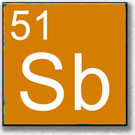
Antimony is a soft, silvery metal with the chemical symbol Sb. It is used primarily in lead-acid batteries, and in metal alloys to increase strength, resistance to corrosion, and hardness. Antimony occurs in nature as the native element, but is more typically found in a wide variety of sulfide minerals including the main ore mineral stibnite (Sb2S3). Antimony often occurs in trace amounts with other metal sulfide minerals containing copper, lead, zinc, and silver. In Virginia, native antimony and tetrahedrite ((Cu,Fe)12Sb4S13) have been reported in base- and precious-metal mining districts including the Gold-Pyrite belt, Virgilina copper district, and the Gossan Lead iron-copper district. Occurrences of stibnite have been reported in pegmatite deposits in the Amelia pegmatite district. Because antimony only occurs in trace concentrations in these deposits, it is not economically feasible for recovery. Although it is unlikely that significant resources of this critical mineral commodity are present in Virginia, it is possible that antimony may be recovered as a co-product of other metals mining.
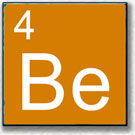
Beryllium is a metallic element with a high strength and very low density. It has a very high melting point and a high thermal conductivity. As an alloy, beryllium adds strength, lightness, and resistance to corrosion and is used in the aerospace and defense industries. In Virginia, beryllium is primarily sourced from the mineral beryl (Be3Al2Si6O18). As a common mineral in pegmatites, beryl occurs in many areas of Virginia. Most notably, in Amelia County where the mineral has been historically mined and prospected. Several other counties have occurrences of beryllium as beryl including Powhatan, Rockbridge, and Charlotte, although not in economically significant quantities.
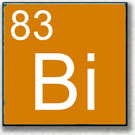
Bismuth is a brittle metallic element with a very low conductivity and high electrical resistance. Bismuth is used in the pharmaceutical industry, for pigments and cosmetics, and as an alloying agent for aerospace and defense industries. Bismuth is commonly found within the minerals bismite (Bi2O3) and bismuthinite (Bi2S3). Bismuth is mostly sourced as a refining byproduct of gold, copper, silver, lead, and tin. Native bismuth has been identified within galena in the Great Gossan Lead iron-copper district of Carroll and Grayson Counties. It is also associated with arsenopyrite (FeAsS) the Mineral District located in Louisa County. Although it is unlikely that significant resources of this critical mineral commodity are present in Virginia, it is possible that bismuth may be recovered as a co-product of other metals mining.
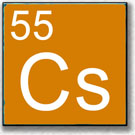
Cesium is a very soft, ductile metallic element with the chemical symbol Cs. It has a low melting point and is highly reactive. Cesium is used in drilling fluids by the oil industry, in infrared detectors, in scintillation counters, and in photoelectric cells. Cesium may be found within the minerals pollucite ((Cs,Na)2Al2Si4O12▪2H2O) and lepidolite (KLi2Al(Si4O10)(F,OH)2). In Virginia, lepidolite has been noted at the Rutherford mines in Amelia County, and possibly near Lake Anna in Louisa and Spotsylvania Counties, although there are no confirmed analytical data for cesium.
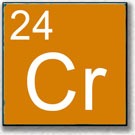
Chromium is a shiny, very hard metal with the chemical symbol Cr. It is used as a hardening alloy or for metal plating to produce a hard, smooth, corrosion-resistant surface. The mineral chromite (Fe2+Cr2O4) is the most important ore of chromium and commonly occurs in igneous and sedimentary rocks. Chromium has been found in the western Piedmont of Virginia associated with pegmatites. Although chromite has not been mined or prospected in Virginia, it has been noted in minor amounts in Amelia, Fairfax, Floyd, and Loudoun counties. Chromium may also be associated with magnetitic soapstone in Franklin County, and fuchsite micas (containing up to 5% Cr2O3) noted in Buckingham, Campbell, Charlotte, and Prince Edward Counties.
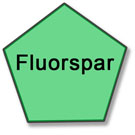
Fluorspar is the mineral fluorite (CaF2), which contains the element fluorine (F). Fluorine is a highly reactive gas that does not occur as a free element in nature, but readily reacts with nearly all other elements. It is used in a wide range of chemical applications and products notably including compounds of sodium fluoride in toothpaste, hydrofluoric acid, and uranium hexafluoride compounds used for uranium enrichment for nuclear fuels. Fluorspar is used by the steel and aluminum industries, and for manufacturing acids. Fluorspar is found in many counties throughout Virginia, commonly associated with barite and with metallic mineral deposits, including the Irish Creek tin deposit (Rockbridge County), the Eller barite deposit (Smyth County), and the Hamme District (Mecklenburg County). In Albemarle County, fluorspar was mined historically from rhyolite dikes and cleavage masses and aggregates in gangue of lead-zinc deposits. Although wide-spread occurrences are known in the Piedmont province, the deposits are typically very limited in extent and commercial economic resources are unlikely.
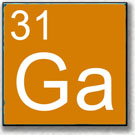
Gallium is a silvery and soft metallic element. It has a low melting point and very high boiling point. Gallium is critical for technology, especially for the aerospace and telecommunications industries. It is used to stabilize plutonium in nuclear applications, for photovoltaics, semiconductors, and transistors. Gallium does not occur in its elemental state in nature, but can be found in abundance within several rare minerals including gallite (CuGaS2), gallobeudantite (PbGa3[(AsO4),(SO4)]2(OH)6), sohngeite (Ga(OH)3), and tsumgallite (GaO(OH)). It is mostly mined as a by-product of bauxite (an ore of aluminum), or in trace amounts in ores of zinc. Small bauxite deposits exist in Botetourt and Augusta Counties in Virginia and have been mined for aluminum, although the presence of gallium is unknown. Gallium has been identified in low concentrations in mine tailings at the Austinville Mine in Wythe County; additional sampling would be necessary in order to determine economic viability.
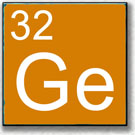
Germanium is a brittle metalloid with the chemical symbol Ge. It is an important semiconductor and a transistor in many electronic devices. Germanium is also used as an alloy, a catalyst, in fluorescent lights, camera lenses, microscopes, and in infrared optical equipment. Germanium occurs in sulfide minerals such as argyrodite (Ag8GeS6), germanite (Cu13Fe2Ge2S16), and sphalerite ((Zn,Fe)S) and is often found with coal, and ores of copper, lead, silver, and zinc. In Virginia, germanium has been noted in minor amounts within metallic mineral deposits in Buckingham, Rockingham, and Wythe counties, and in southwest Virginia coal beds. The trace concentrations of germanium in these deposits has not made it economic for recovery in the past.
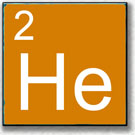
Helium is a light noble gas with the chemical symbol He. Helium has a very low melting point, a very high specific heat, and remains liquid at very low temperatures. Such unique qualities make helium extremely useful in cryogenics, super conductivity, nuclear reactors, and fuel rockets. Although helium escapes to space and is not contained within Earth's atmosphere, it is generated by rocks containing radioactive uranium and thorium. During the radioactive decay process, minerals including uraninite (UO2) release helium as a trace component of natural gas underground. Recovery of helium is therefore part of the natural gas drilling process, during which it is fractionally distilled from other gasses. Although not in large quantities, it is possible that helium may be recovered as a co-product of other natural gases during drilling.
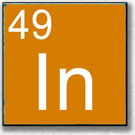
Indium is a soft, silvery metal with the chemical symbol In. Indium is used as an alloy, as a metal plating, and for photoconductors. Indium is associated with ores of iron, copper, and lead, and with zinc minerals such as chalcopyrite (CuFeS2) and sphalerite ((Zn,Fe)S). In Virginia, both chalcopyrite and sphalerite are common in small amounts. Indium may exist as a trace element in ores at the Austinville mines in Wythe County and the Bowers-Campbell mine in Rockingham County, although additional sampling would be necessary in order to determine the economic viability.
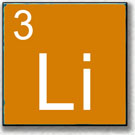
Lithium is a silvery, soft metallic element with the chemical symbol Li. Lithium is highly reactive with a very low density. It is used for batteries, as an alloy, solder, and as a semiconductor. Lithium is commonly found within pegmatite minerals such as lepidolite (K(Li,Al)3(Si,Al)4O10(F,OH)2), spodumene (LiAlSi2O6), and petalite (LiAl(Si4O10)). In Virginia, lepidolite was tentatively identified near Lake Anna in Louisa and Spotsylvania Counties, although the presence of lithium was not confirmed. Lithium may also be present in pegmatites of the Amelia pegmatite district (Rutherford and Morefield mines) in Amelia County.
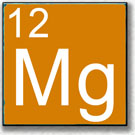
Magnesium is a silvery, light metallic element with the chemical symbol Mg. Magnesium is reactive, with low melting and boiling points. It is used as an alloy with other metals and is used to de-sulfur steel and iron. Magnesium occurs in nature combined with other elements in minerals such as dolomite (CaMg(CO3)2), magnesite (MgCO3), and olivine ((Mg,Fe)2SiO4)). In Virginia, the mineral dolomite is common in carbonate rocks of the Valley and Ridge province. Magnesite is present in the Piedmont province in Albemarle, Amelia, and Floyd counties, where it occurs with soapstone and talc. Olivine occurs within various metamorphic rocks and diabase of the Piedmont, and in some heavy mineral sands of the Coastal Plain. Forsterite ((Mg)2SiO4) occurs in the southern Blue Ridge province in metamorphosed ultramafic rocks. Mining for magnesium has not occurred in Virginia, likely because it is not present in quantities justifiable for mining.

Platinum Group Metals elements include the metals platinum (Pt), palladium (Pd), rhodium (Rh), ruthenium (Ru), iridium (Ir), and osmium (Os). These platinum group metals (PGMs) are rare, resistant, and relatively non-reactive. They are highly desirable for a variety of industries. PGMs are used as catalysts to reduce vehicle emissions, for the manufacturing of explosives and fertilizers, and for refining crude oil. PGMs are used as hardening alloys, within computers and electronics, and for medical implants. Although all PGMs can be found in their native state, they may also combine with other elements to form various minerals. Although they have not been mined as a primary commodity, they may accompany other metals (such as iron, gold, and zinc) in minor quantities. In Virginia, there have been unconfirmed reports of PGM associated with ultramafic rocks in the Blue Ridge province, but the likelihood of economic deposits is very low.

Potash is a type of salt containing the metallic element potassium (K). Potassium is soft, light, and highly reactive. Potash is used predominantly as a fertilizer, although it has many other applications including alloys, oil well drilling fluids, and water softeners. Many igneous and metamorphic rocks of the Virginia Piedmont and Blue Ridge contain potassium feldspar (K-feldspar) minerals such as microcline and orthoclase (KAlSi3O8), although such rocks are not primary ores of potassium. Minable potash typically forms as the evaporite minerals sylvite (KCl), langbeinite (K2MgM2(SO4)3), carnallite (KMgCl3▪6H2O), or kainite (KMg(SO4)Cl▪3H2O). In Virginia, evaporite minerals occur mainly in the southwestern counties, however they are typically gypsum, containing calcium (Ca) rather than potassium (K).
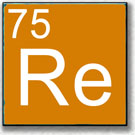
Rhenium is a dense, metallic element with the chemical symbol Re. Rhenium is very rare, has an extremely high melting point and boiling point. It is primarily used as a catalyst to refine petroleum, and as a superalloy to construct aircraft turbine blades. Rhenium may occur within the mineral molybdenite ((Mo,Re)S2) or rarely as rheniite (ReS2). Such sulfide minerals may form in hydrothermal veins, or in porphyry type deposits. Rhenium is most commonly produced as a by-product of copper and molybdenum mining. Several minor occurrences of molybdenite exist in Virginia in the Blue Ridge and Piedmont provinces, although the presence of rhenium is not reported.
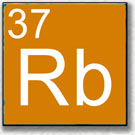
Rubidium is a very soft, dense metal with the chemical symbol Rb. Rubidium is ductile, reactive, and conductive. It has many uses, primarily to make specialty glass, but is also indispensable for global positioning systems (GPS), fiber optics, electronics, pyrotechnics, and for the medical industry. Rubidium is not a major element in minerals, however it may occur in trace amounts within a variety of rocks. The minerals leucite (K(AlSi2O6), pollucite ((Cs,Na)2(Al2Si4O12)•2H2O), carnallite (KMgCl3▪6H2O), and zinnwaldite (KFe22+Al(Al2Si2O10)(OH)2 to KLi2Al(Si4O10)(F,OH)2) may contain rubidium. Zinnwaldite, similar to muscovite mica, has been noted to occur in Amelia County in Virginia, observed within the pegmatites of the Morefield mine. Although the amount of rubidium present is unknown, zinnwaldite mica has been mined from this location.
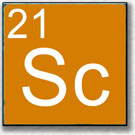
Scandium is a soft, light metal with the chemical symbol Sc. It is reactive and has a high melting point. Scandium is often grouped with the Rare Earth Elements (REE). Scandium is used as an alloy by the aerospace industry, and for the production of specialty lights. Although scandium is not rare, it typically occurs in trace amounts in many different minerals. It is most concentrated within the minerals wolframite ((Fe,Mn)WO4), bazzite (Be3Sc2(Si6O18)), and thortveitite ((Sc,Y)2Si2O7). Most scandium is retrieved as a by-product of uranium or tungsten mining. In Virginia, wolframite has been prospected for tungsten in Mecklenburg County, although the presence of scandium is not reported.
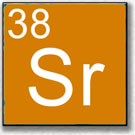
Strontium is a soft, reactive metal with the chemical symbol Sr. Strontium is used in pyrotechnics, and for the manufacturing of emergency flares. It has several applications in the medical industry (such as cancer treatment and heart PET scans), is used in drilling fluid for oil and gas wells, and its isotopes are used for archaeological and geological research. Strontium may be present within the minerals celestite (celestine) (SrSO4) or strontianite (SrCO3), both of which occur in Virginia. The carbonate strontianite is reported to occur in Highland and Wise Counties as masses within limestone. Celestite, a sulfate, has been identified within limestone or dolostone of several Valley and Ridge counties. The most notable occurrence of both strontium minerals is within East Stone Gap quarry, where these minerals may be found in abundance.
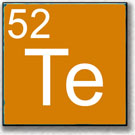
Tellurium is a brittle, silver-white metalloid with the chemical symbol Te. Commercially, the primary use of tellurium is in copper (tellurium copper) and steel alloys, where it improves machinability. Tellurium is critical to technological applications in cadmium-tellurium solar panels and semiconductors. Tellurium is one of the rarest stable solid elements in the Earth's crust; it is sometimes found in its native form, but is more often found as the tellurides of gold such as calaverite and krennerite (two different polymorphs of AuTe2), petzite (Ag3AuTe2), and sylvanite ((Ag,Au)2Te4). In Virginia, tellurium has been reported in the bismuth telluride mineral tetradymite (Bi2Te2S) in the Gold-Pyrite belt, such as the Tellurium Mine, located near Columbia in Fluvanna and Goochland counties.
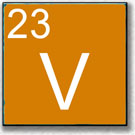
Vanadium is a hard, ductile, silvery-grey transition metal with the chemical symbol V. Vanadium is electrically conductive and thermally insulating. Most vanadium produced is used to make a tough vanadium-steel alloy used in nuclear reactors, armor plating, axles, tools, piston rods, and crankshafts. The elemental metal is rare in nature, but vanadium compounds occur naturally in about 65 different minerals including magnetite (Fe3+2Fe2+O4), vanadinite (Pb5(VO4)3Cl), carnotite (K2(UO2)2(VO4)2•3H2O), and patronite (V5+S4). The most important industrial vanadium compound, vanadium pentoxide, is used as a catalyst for the production of sulfuric acid. Much of the world's vanadium production is now sourced from vanadium-bearing magnetite found in ultramafic gabbro bodies. In Virginia, crystalline rocks in the Piedmont, just southwest of Powhatan were analyzed for uranium, thorium, cobalt, vanadium, and molybdenum to explore the anomalous radioactivity detected in a 1974 aeroradiometric survey of the area. The surveys and analyses indicated that the radioactivity was mainly caused by thorium present in monazite within the Maidens gneiss.
